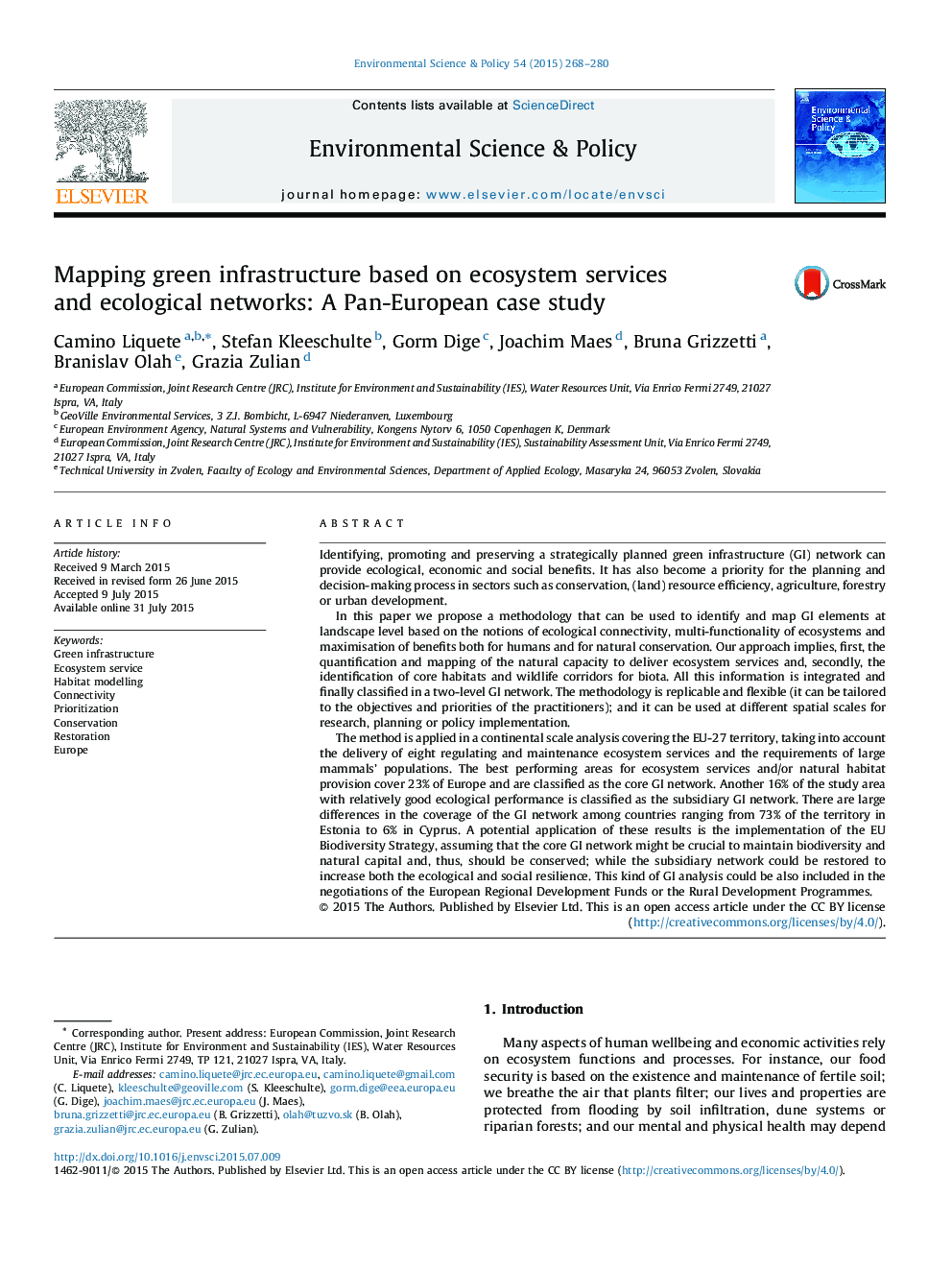| Article ID | Journal | Published Year | Pages | File Type |
|---|---|---|---|---|
| 7467291 | Environmental Science & Policy | 2015 | 13 Pages |
Abstract
The method is applied in a continental scale analysis covering the EU-27 territory, taking into account the delivery of eight regulating and maintenance ecosystem services and the requirements of large mammals' populations. The best performing areas for ecosystem services and/or natural habitat provision cover 23% of Europe and are classified as the core GI network. Another 16% of the study area with relatively good ecological performance is classified as the subsidiary GI network. There are large differences in the coverage of the GI network among countries ranging from 73% of the territory in Estonia to 6% in Cyprus. A potential application of these results is the implementation of the EU Biodiversity Strategy, assuming that the core GI network might be crucial to maintain biodiversity and natural capital and, thus, should be conserved; while the subsidiary network could be restored to increase both the ecological and social resilience. This kind of GI analysis could be also included in the negotiations of the European Regional Development Funds or the Rural Development Programmes.
Keywords
Related Topics
Physical Sciences and Engineering
Energy
Renewable Energy, Sustainability and the Environment
Authors
Camino Liquete, Stefan Kleeschulte, Gorm Dige, Joachim Maes, Bruna Grizzetti, Branislav Olah, Grazia Zulian,
